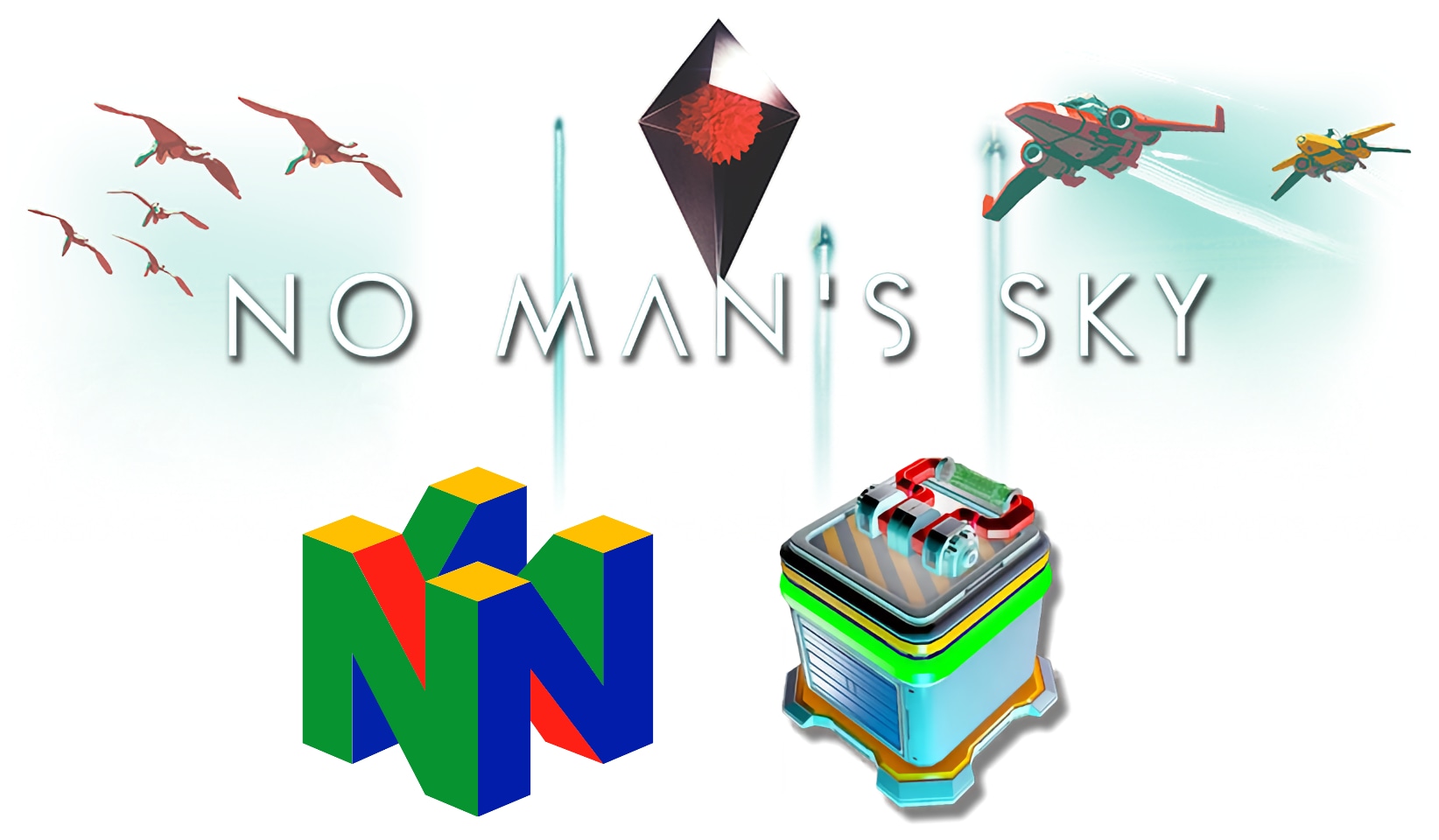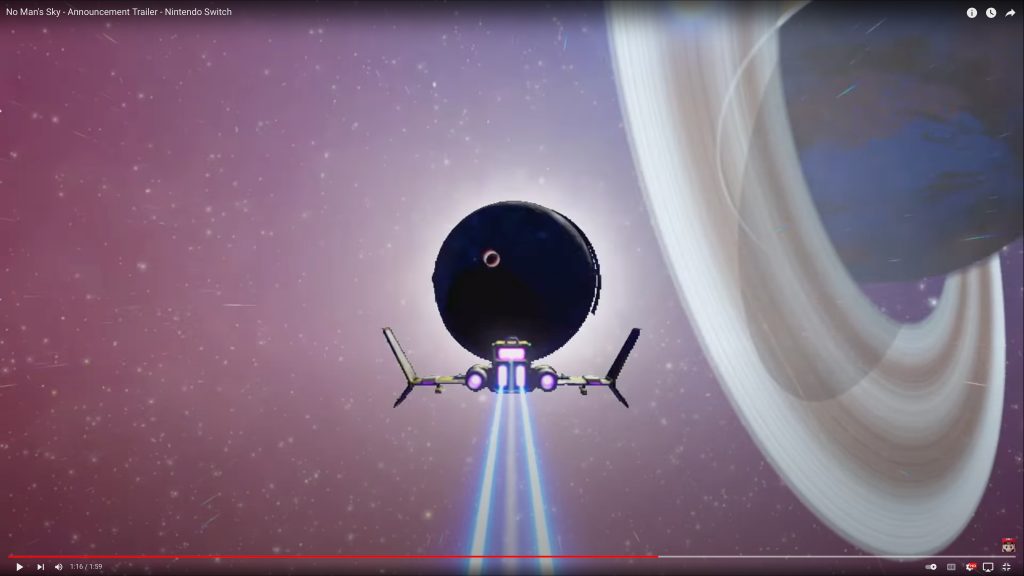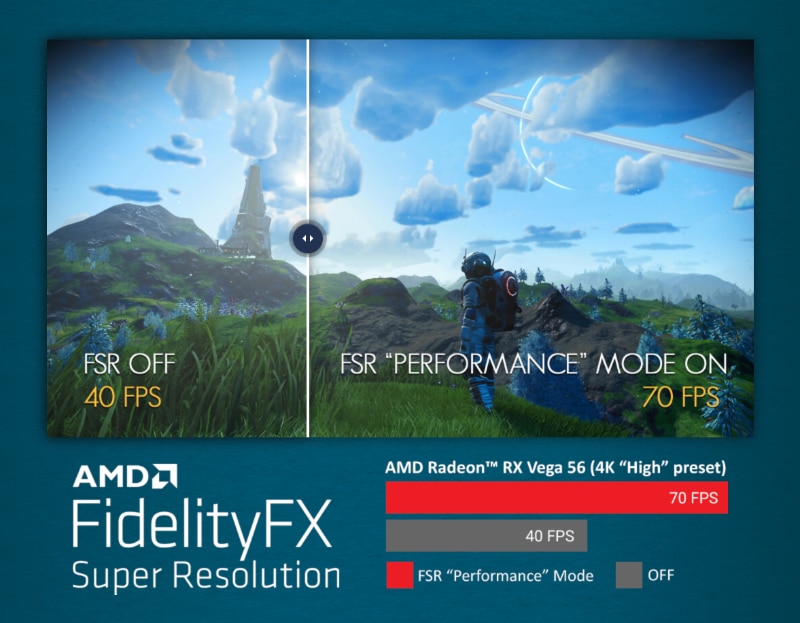
“No Man’s Sky” on Nintendo Switch – So, How Will They Do It? [Updated]
Many of us had wondered over the past few years if it would ever happen, and last week Hello Games announced that — yes — No Man’s Sky will be landing on the Nintendo Switch game console sometime this summer. [ Since this post was first published, a tweet from HG’s Sean Murray has announced October 7 as the launch date of the Switch version. More info can be found at the bottom of this post. ]
The news comes to the surprise of many who had assumed the Switch wasn’t up to the task of conjuring the limitless, procedurally generated universe of No Man’s Sky. And, indeed, Hello Games is certain to have had to make some compromises to get the game running on the Switch in a manner that maintains a solid framerate while remaining a real looker. But, as the No Man’s Sky Switch announcement trailer demonstrates, they seem to be having success in the effort. (And, yes, based on a number of small details in the trailer video, most notably the discernibly low resolution, I feel confident we have been handed in-game video of the Switch port of the game in that trailer.)
No Man’s Sky looks the best and plays the smoothest on high power gaming PCs, the Xbox Series X, and the Playstation 5. As the chart below shows, the older Playstation 4 — the game’s original target platform — is a considerably more powerful system than the Switch for playing a game like No Man’s Sky, which is particularly intensive as far as both GPU and CPU demands. So, how will they do it?
| Nintendo Switch | Playstation 4 | |
| CPU | Tegra X1 (4x ARM Cortex-A57 cores) @ 1.02GHz | Jaguar (8x AMD x86-64 cores) @ 1.6GHz |
| GPU | Nvidia Maxwell w/ 256 stream processors | AMD GCN Radeon w/ 1152 stream processors |
| GPU Perf | 393 GigaFLOPs | 1.84 TeraFLOPs |
| System RAM | 4GB LPDDR4 @ 1.6GHz | 8GB GDDR5 @ 2.75GHz |
| Memory Bandwidth | 26GB/s | 176GB/s |
| Max Display Res | 1920×1080 docked, 1280×720 mobile | 1920×1080 |
One approach is the use of adaptive screen resolutions. Many console games vary their screen resolution depending on the complexity of the scene being rendered, even on today’s most powerful consoles. I have analyzed a still shot grabbed from the Switch announcement trailer at different source resolutions with several graphics editors and, counting the individual pixels for a section of the screen and calculating across the full screen width, I have determined that it is being rendered with a horizontal resolution of 640 pixels. It’s hard to estimate what the high and low marks will be for rendering in No Man’s Sky on the Switch, but the indicated scene appears to be rendering at half of the Switch’s mobile resolution of 1280 pixels wide. Such variable rendering would certainly assist in keeping the game’s framerate fluid.
Another performance enhancing approach that will certainly be employed on the Switch port is the use of AMD’s FidelityFX Super Resolution, a set of open source high quality upscaling algorithms that allows a game to be rendered at a lower resolution and scaled up by the GPU to a more desirable target resolution for significantly improved framerates with almost no reduction in image quality. And, the GPU of the Nvidia Tegra X1 in the Switch supports this technology.
As this post is being written, Hello Games has just launched the No Man’s Sky Sentinel (v3.8) update and, among the many other new features and enhancements it brings, AMD’s FSR can now be enabled at several different levels in the game’s graphics settings. This might actually work hand-in-hand with the aforementioned adaptive screen resolution technique on the Switch, varying the FSR upscale target resolution depending on scene complexity.
Another approach Hello Games has used to ensure smooth gameplay in the past is to tailor No Man’s Sky‘s graphics settings specifically to each console. I recall, in the early days of No Man’s Sky, it was estimated that the PS4’s baked in graphics settings were generally equivalent to the PC version with most of its graphics options set to “medium” levels. The latest generation consoles from Sony and Microsoft enjoy graphical settings basically equivalent to the PC version with “ultra” settings enabled. Surely Hello Games will determine the best settings profile for the hardware and bake them into the Switch release.
Happily, the Nintendo Switch’s hardware and proprietary OS support several 3D graphics APIs including NVN, created for Nintendo by Nvidia, as well as OpenGL and Vulkan from the Khronos group. Vulcan is the current API used on the Windows PC release, which is the development version of the game. Having Vulkan running natively on the Switch may benefit performance by removing the need to translate the game’s rendering code to another foreign API.
One of the most frequently voiced concerns on the No Man’s Sky Discord since the Switch announcement is the matter online multiplayer. The console networks of Sony and Microsoft seem to be generally more robust than that of Nintendo; they feature a greater percentage of games with online multiplayer support and games with such a component generally support more online players at once than similar titles on the Switch. There are some exceptions, though. Fotrnite on the Switch, for example, supports platform crossplay and the same 100 networked players per session as other consoles and PC running through Epic Games’ servers. So, the multiplayer count for consoles in No Man’s Sky — 16 players per server (32 per for PC) — should be maintainable on the Switch, at least from a network perspective. [ Since this post was first published, it has been revealed that the Switch version will be a single-player experience. More info at the bottom of this post.]
I am personally excited for the upcoming Switch release of No Man’s Sky, and had long hoped there was a chance Hello Games would find a way. The notion of being able to play explore the NMS universe away from the desk or otherwise on-the-go is quite appealing, and this is why I reserved a pre-order for Valve’s upcoming, Linux-based Steam Deck mobile console. Steam on Linux has long been able to run No Man’s Sky, thanks to the Proton translation layer. (And, in fact, with the release of the Sentinel update, Hello Games indicates they have tailored the game to run “natively” on the Steam Deck, taking advantage of the touchscreen and control sticks, but I believe this is not a true native Linux port but, rather, the tailoring of certain aspects of the Proton-wrapped Windows version of the game for the Steam Deck.) However, as a result of this great news from Hello Games and as an owner of an original Switch console, I will likely be passing on my Steam Deck order reservation and enjoying No Man’s Sky on-the-go on Nintendo’s mobile console.
Update – March 1, 2022: Shortly after the publication of this post, the first video of No Man’s Sky running on Valve’s Steam Deck surfaced, and we have posted a casual analysis of the video with an eye towards estimating overall performance on that system.
Update – June 23, 2022: Hello Games’ chief Sean Murray has just made a tweet announcing October 7th as the release date for the Nintendo Switch version of No Man’s Sky. A new video of the game being played by Sean on a Switch is shown in the tweet. Additionally, a new Switch update page on the No Man’s Sky website indicates that the Switch version will be available on that day as both a digital download and a physical version in stores, thanks to HG’s partnership with Bandai Namco.
On this new page it is revealed that the Switch version of No Man’s Sky will be a single-player experience.
No Man’s Sky Switch Edition will launch as a single-player experience. As an award-winning live service game, the Switch Edition will continue to benefit from ongoing development post launch.
The update page also indicates that on that date, for the first time, a physical version of the game for the Playstation 5 will also be made available in stores.



5 thoughts on ““No Man’s Sky” on Nintendo Switch – So, How Will They Do It? [Updated]”
That video is so fucking fake
I feel quite certain it’s not, for several reasons. One is the pixellation seen when the Anomaly warps in, that I mentioned in the post. Another is the pop-in of the planetary monument (on the left) as the starship flies through the atmosphere. It pops in and does so some distance above the surface. That’s a glitchy render incident that is quite likely due to lag. Lag is something that will intrude on the Steam version here and there, certainly.